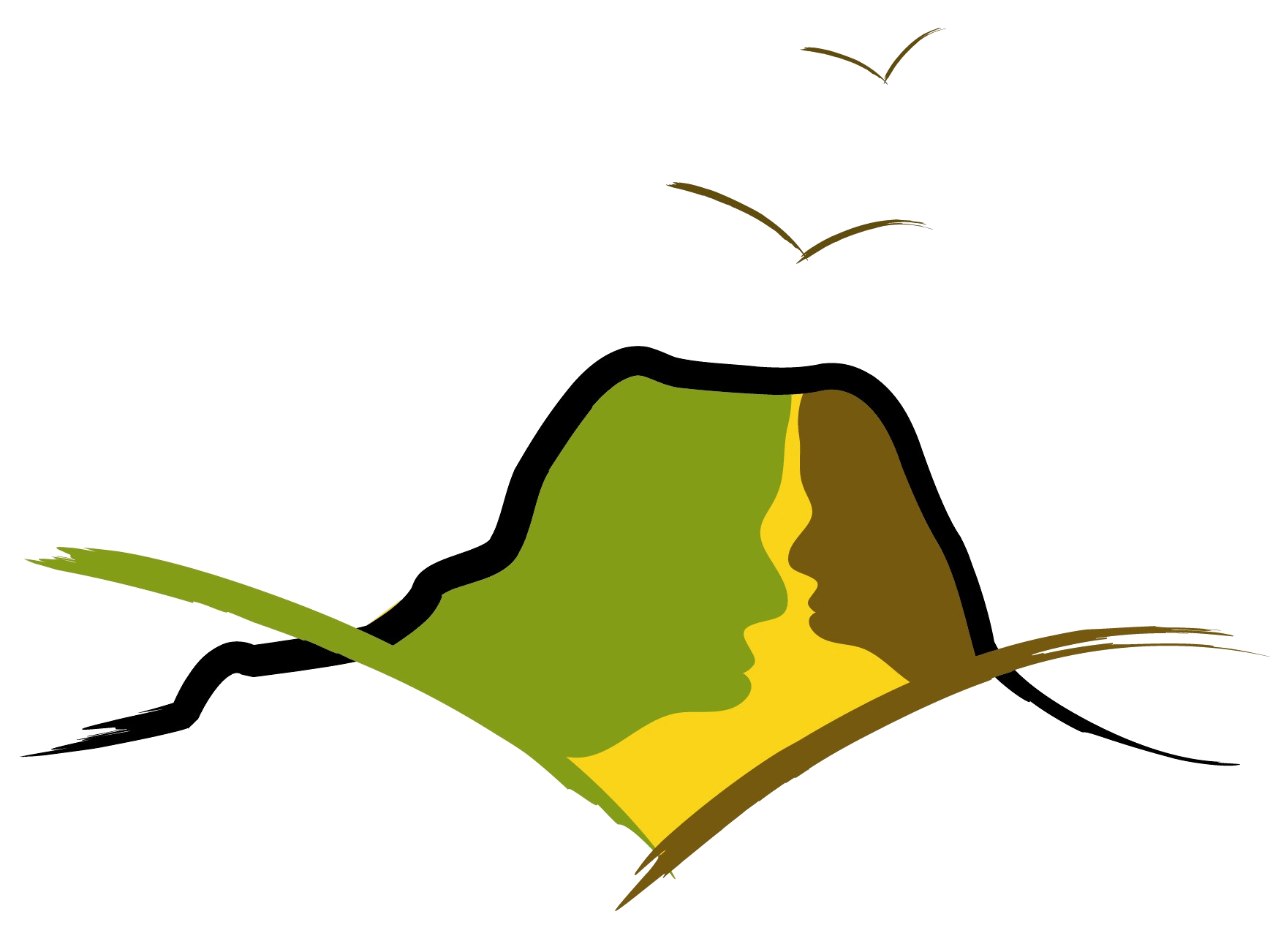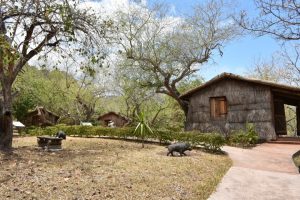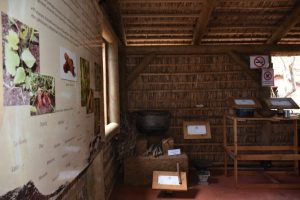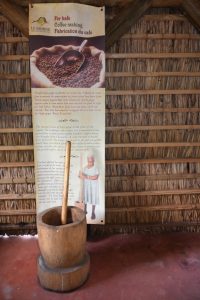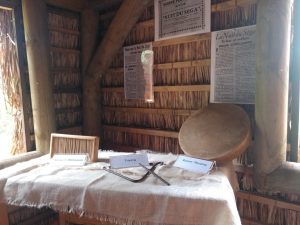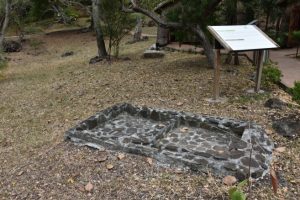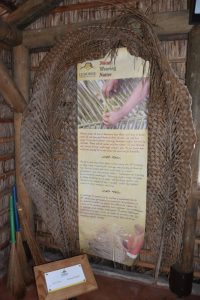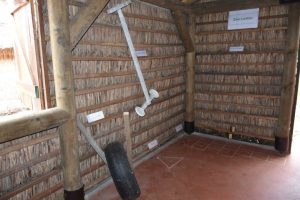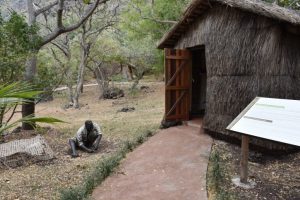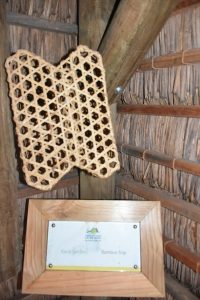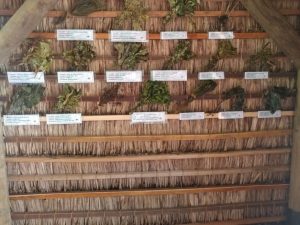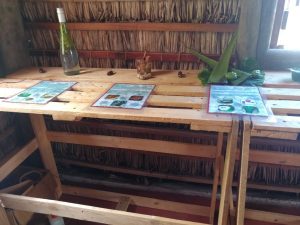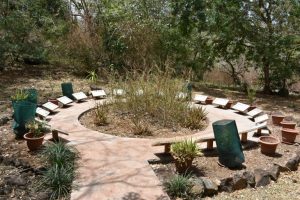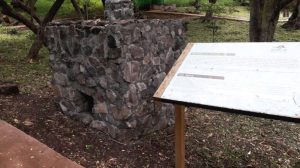About
Your Visit
Discover The Landscape
Trou Chenille Open Air Museum
As a ritual, the official ceremony to commemorate the 185th anniversary of the Abolition of Slavery in Mauritius was organised on the 01st of February 2020 and this specific date marked also the Inauguration of the Trou Chenille Open Air Museum which is the Replica of the ancient village of Trou Chenille.
One of the objectives of Le Morne Heritage Trust Fund (LMHTF) is the collecting, preserving, disseminating of elements of Intangible Cultural Heritage pertaining to Le Morne Cultural Landscape World Heritage Site. Its mission is also to actively involve the local community in the safeguarding of their ICH through transmission to the younger generations.
The replica of Trou Chenille village project have among its main objectives to raise awareness and sensitization as well as build education on the historical and cultural significance of the former village of Trou Chenille to the Mauritian and foreign visitors in view of safeguarding memory and encourage cultural tourism on Le Morne Cultural Landscape.
Historical Background
Trou Chenille is situated in the South West of Mauritius, at the foot of the Le Morne Brabant Mountain, more precisely at the vicinity of the access to the mountain. According to historical and archaeological research, Trou Chenille is considered as the cradle of settlement in the South West of Mauritius after the abolition of slavery in 1835 and the first village of Le Morne, where slave descendants were living.
Several elderly people interviewed in Le Morne village have mentioned that they were born and raised in this village and its vicinity which was composed of about 20-30 families and about 50 huts until they left in the 1950’s for various reasons, to other places on the landscape, to be finally resettled at the locality of the current village of Le Morne. Nowadays, Trou Chenille forms part of the rich cultural heritage of the Le Morne Cultural Landscape World Heritage Site which helps to maintain its Authenticity and Integrity. It bears the memory of a population which is still living.
The oral history of the preceding slave era, the cultural practices and tradition after the abolition of slavery are actively being transmitted from one generation to the next as intangible cultural heritage and conveys the essence of the place. Hence, the need to safeguard this heritage asset for present and future generations to come before it disappears or falls into oblivion.
The aim of the project is to present and interpret as far as possible, how life used to be at the time of Trou Chenille. The Replica comprises of the five traditional huts using the original materials to retain its authenticity for example: the flooring has been casted in concrete with cow waste finishes and the roof made of straws. Each hut depicts a particular theme/activity which reflects the daily life conditions of the people living in Trou Chenille as follow:
1. Yesteryear Kitchen Hut
In Trou Chenille village, the kitchen was not part of the main house. It was located outside. Meals were prepared on a hearth (foyer) where bundles of wood or charcoal were used as fuel. They also used an oven made out of a zinc tin (ferblan) for cakes and bread cooking. Some villagers used a réchaud (it was made of zinc and comprised two pieces fixed together).
Charcoal was placed in the bowl and the ashes fell in the square box beneath. The cooking utensils were placed on the charcoal. Food was also cooked in a deksi or in a karay. Villagers ate in enamel plates (lasietemaye) with the fingers or with steel spoons. They drank from lamok.
Until the 1980’s maize, manioc and rice were the main foods consumed by the inhabitants of Le Morne village. One of the most common dishes mentioned is the “diri-maye”, which consisted of a mixture of boiled maize and rice, accompanied with fish soup or fish curry.
The villagers have been able to subsist by supplementing their diets with vegetables, hunting and fishing. These eating habits have been passed over as inheritance to succeeding generations.
2. Sega Tipik Hut
In the past Sega Nights were held every week in the former village of Le Morne also known as Trou Chenille. Sega nights were organized in different villages but those held at Trou Chenille were the most popular.
It was under an old Banyan Tree mostly known as Sega Tree that the villagers, gathered to tell stories, sing and dance the Sega all through Saturday night till early Sunday morning. They would sing, dance under the beat rhythm of their traditional instruments: the ravann, maravann and triyang.
People from the nearby villagers walked over long distances to attend the Sega Nights in the area. A historic moment took place in Le Morne Village on 24th October 1964 when la Nuit du Séga (Sega night) was held.
Sega artists from all over Mauritius were invited to participate in a competition where the best singer would be awarded a prize. That night gave official recognition to traditional sega. Mauritius discovered Ti-Frer, 64-year-old, the father of Sega Tipik.
He was awarded the first prize. Since 2014, the Mauritian Sega has been declared UNESCO Intangible Cultural Heritage of Humanity and is a symbol of our National Identity.
3. Crafts And Occupations Hut
The village of Trou-Chenille was dynamic and the villagers living and working in the region have various economic activities and occupations such as:
i) Charcoal Making
The inhabitants of Trou Chenille also made charcoal for Mr. Cambier, which he in turn sent to areas around the island for sale. Charcoal was mainly made from the wood of filao trees (casuarinas).
People have stopped making charcoal as from the 1960’s following restricted access to the woods. The wood were piled up and covered with straw and soil forming an oven with an opening to lighten the billets of wood.
ii) Salt Making
iii) Wood Bundle Making
Wood bundle making and selling by huckstering was an informal subsistence economic activity carried out by both men and women. The woods were cut and sold in small bundles.
iv) Coconut Broom Making
Coconut brooms known as balie koko were made in almost every family for domestic use. The central stems of the coconut leaves were used. Balie koko are usually used for sweeping courtyards. Other local brooms include balie koko, balie timil and balie tam used for sweeping the interior of the home.
v) Hunting
Hunting was an important subsistence activity in the past. Hunting of tenrec, macaques, hares and wild pigs helped numerous families to survive. These hunting practices have become part of our cultural heritage which is disappearing. Knowledge of hunting techniques and tools was transmitted orally from generation to generation.
4. Fisherman's Hut
Fishing has been a traditional subsistence activity since the 18th Century dating back the slavery period in Mauritius. It is an integral part of the way of life and of the local culture of the people of Le Morne. Knowledge of the sea and fishing techniques were transmitted from generation to generation.
Over time, fishermen had to learn to use the various reef breaks in the lagoon, using their senses to study and interpret the sound of waves, the direction and sound of the wind and the movement of cloud to ensure their safety which is their priority and to have a good catch.
Traditional fishing methods include:
- Seine fishing: This is practiced from March to September in the lagoon. The seine is a long net held by four or five boats next to each other in the water. Weights are attached to the lower corners of the net so that it is held straight. To encourage the fish into the net, fishermen beat the water with a stick.
- Fishing rod: A bamboo fishing rod is used to which a nylon thread and a hook are attached. This technique is mainly used in the lagoon or on the reef.
- Basket traps (Kazie): These are very common in the region. The fisherman uses a basket trap traditionally woven with bamboo, which holds the bait and is submerged in the water. Today basket traps are made with iron wire.
Transmission of this knowledge is achieved only during the practice of fishing.
5. Traditional Healing Practices Hut
Traditional healing/medicine or popular/folk medicine refers to the knowledge, skills and practices based on the theories, beliefs and experiences indigenous to different cultures, used in the maintenance of health and in the prevention, improvement and treatment of physical and mental illness.
Traditional healing has not faded with time in Le Morne. It is still deeply anchored in the practices of the local community. Treatments include herbal medicine, “passes” or “marques” have remained a popular form of traditional healing used as primary health care. These ancestral healing practices have been preserved throughout the years by oral transmission.
A deep relationship exists between Le Morne Brabant Mountain and its people. It is a benefactor; it is the figure of a caring Mother and remains the treasure house for medicinal plants.
The healing powers of nature are fully harnessed; plants serve as medicine, the ‘spirits’ or powers dwelling in the plants are called upon to make the medicine effective, and plants with medicinal properties are tendered with love and care like the member of the family.
The inhabitants of Le Morne have such strong beliefs in nature’s healing power that good health is considered as a gift of nature.
6. Lime Kiln
Lime production which has been an important activity since the beginning of the French Administration of the island, was a very common feature in coastal areas, including that of Le Morne.
Lime mortar has been used in construction since the 18th century. In the 19th century, it was used also in the sugar industry. But as lime and stone were expensive, most people built their houses in wood and straw and palm leaves. According to oral history, the limekiln at Le Morne was built in the 20th century by the Cambier family.
Activities connected with it included carrying corals to the kiln, burning of the coral or shells at 140 degrees Celsius to produce ‘quick lime’. The villagers of Trou Chenille and Makak used to work for the limekiln.
